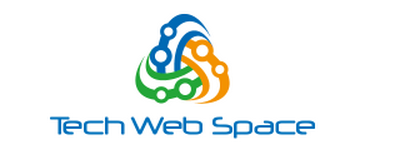
Customer Relationship Management (CRM) software plays a vital role in helping businesses manage communication, automate tasks, and improve customer experience. It’s a very important business software that most larger companies use nowadays. However, simply having a CRM system is not enough. Businesses must focus on optimizing CRM workflows to eliminate inefficiencies, reduce errors, and boost productivity. When workflows are carefully structured and consistently maintained, teams can serve clients faster, close deals more effectively, and make better use of their time and resources.
Assessing Current CRM Processes
In order to begin streamlining workflows, businesses should assess how their CRM system is currently used. Many teams adopt CRMs with default settings or use them sporadically, which leads to inconsistent results. Start by reviewing each workflow that touches customer data, such as lead generation, sales tracking, and customer service.
Ask team members where bottlenecks occur or which steps feel redundant. For example, if multiple people manually input similar customer details across departments, automation may help. In other cases, the issue might stem from unclear roles or missing follow-ups. Mapping out each process in detail reveals inefficiencies that are easy to overlook during daily operations.
Ensuring Data Quality
Efficient workflows rely on accurate and up-to-date data. Poor-quality data leads to faulty reports, ineffective campaigns, and missed opportunities. CRM systems must be maintained regularly to prevent this. Outdated contacts, duplicate entries, and inconsistent formatting can create confusion and slow down automated processes.
Regular maintenance is essential to keep the system running smoothly and avoid errors in customer outreach or reporting. Businesses should include routine data checks as part of their CRM workflow strategy to maintain a clean database. Even the most well-designed automation and processes can become ineffective if the system is cluttered with outdated or duplicate information. Clean data supports better segmentation, accurate reporting, and more personalized communication. It also improves the performance of AI-powered features, such as predictive analytics or lead scoring. Make data quality a team-wide responsibility, and schedule audits monthly or quarterly.
Setting Clear Objectives
Once you’ve identified the gaps, the next step is to define what success looks like. Optimizing CRM workflows without clear goals can lead to over-complication. Set specific objectives that are tied to measurable outcomes. For example, you might aim to shorten lead response time, reduce manual data entry, or improve sales.
Align workflow changes with broader company goals. If your priority is customer retention, and it should be, as increasing customer retention rates by 5% increases profits by 25% to 95%, your workflows should focus on timely post-sale communication. If your business needs to scale sales operations, you may benefit more from automation tools that track and qualify leads efficiently.
Automating Routine Tasks
Automation is key to reducing repetitive work and eliminating delays. Tasks like sending welcome emails, assigning leads to sales reps, and scheduling follow-ups can be handled automatically within most CRM systems. This frees up time for team members to focus on higher-value interactions.
However, automation must be implemented carefully. Avoid setting too many triggers or creating overlapping rules, as this can confuse users and generate redundant actions. It’s best to start with a few critical automations and monitor their performance. Over time, you can refine and expand them based on what works best.
Also, make sure your team is trained to understand how automation works within the CRM. If staff don’t know what is automated and what still requires manual action, things can fall through the cracks.
Integrating CRM with Other Systems
Another effective way of optimizing CRM workflows is through integration with other tools. Most businesses rely on multiple platforms, such as marketing software, helpdesk tools, or accounting systems. If these platforms don’t communicate with your CRM, teams waste time switching between systems and manually transferring data. That’s why proper CRM integration is vital for small teams and large companies alike.
Connecting your CRM with tools like email marketing platforms, chatbots, and customer service solutions creates a single source of truth. It also ensures that customer interactions across all channels are tracked and available in one place. This allows for faster responses and more informed decisions.
Use built-in integrations or third-party tools like Zapier or Make to connect platforms. In some cases, you may need to develop custom APIs to enable more complex data flows. Whatever approach you take, make sure the connection is reliable and secure.
Training and Support
Even the best-designed workflows can fail if users don’t understand how to follow them. That’s why training is a critical part of workflow optimization. When businesses update their CRM processes, they must also update onboarding materials and offer training sessions to existing staff.
Employees should know how to use automation tools, manage data correctly, and respond to CRM alerts. Use simple documentation and short video tutorials to show how each workflow functions. Encourage feedback so you can identify gaps in understanding or usability.
In addition to initial training, provide ongoing support. Designate someone on each team as the CRM expert or create a Slack channel for questions. If your team knows where to get help quickly, they’ll be more likely to follow workflows correctly and consistently. It’s been proven that well-structured workflows boost operational efficiency and reduce errors.
Monitoring and Continuous Improvement
Workflows are not static. Once changes are in place, you must monitor how they perform. Use metrics such as response time, deal cycle length, or email open rates to track whether the new workflows deliver real improvements.
Encourage regular feedback from CRM users. They often spot problems or opportunities before managers do. Based on this input and data analysis, make small adjustments rather than sweeping changes. This makes it easier to test what works and avoid disruption.
Use built-in CRM reports or external analytics tools to assess performance. Schedule workflow reviews every few months to ensure the system remains aligned with business goals and current team needs.
Case Studies: Real-World Benefits
Many companies have achieved measurable success by optimizing CRM workflows. For instance, a mid-sized SaaS company reduced its sales cycle by 30% after automating lead assignment and follow-ups. A retail business improved customer satisfaction by integrating its CRM with a helpdesk platform, enabling support agents to access purchase history instantly.
These examples highlight that even simple changes—like removing redundant steps or updating automation rules—can lead to meaningful gains. The key is to focus on real pain points and track the impact of each change.
Conclusion
Optimizing CRM workflows is not a one-time task—it’s an ongoing strategy that supports growth and efficiency. By assessing current processes, improving data quality, leveraging automation, and integrating tools, businesses can build a CRM system that works for them, not against them. A streamlined CRM leads to fewer errors, faster service, and more satisfied customers. Whether you’re a startup or an established business, the path to greater efficiency starts with smarter CRM workflows.

